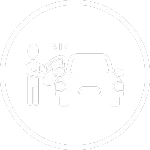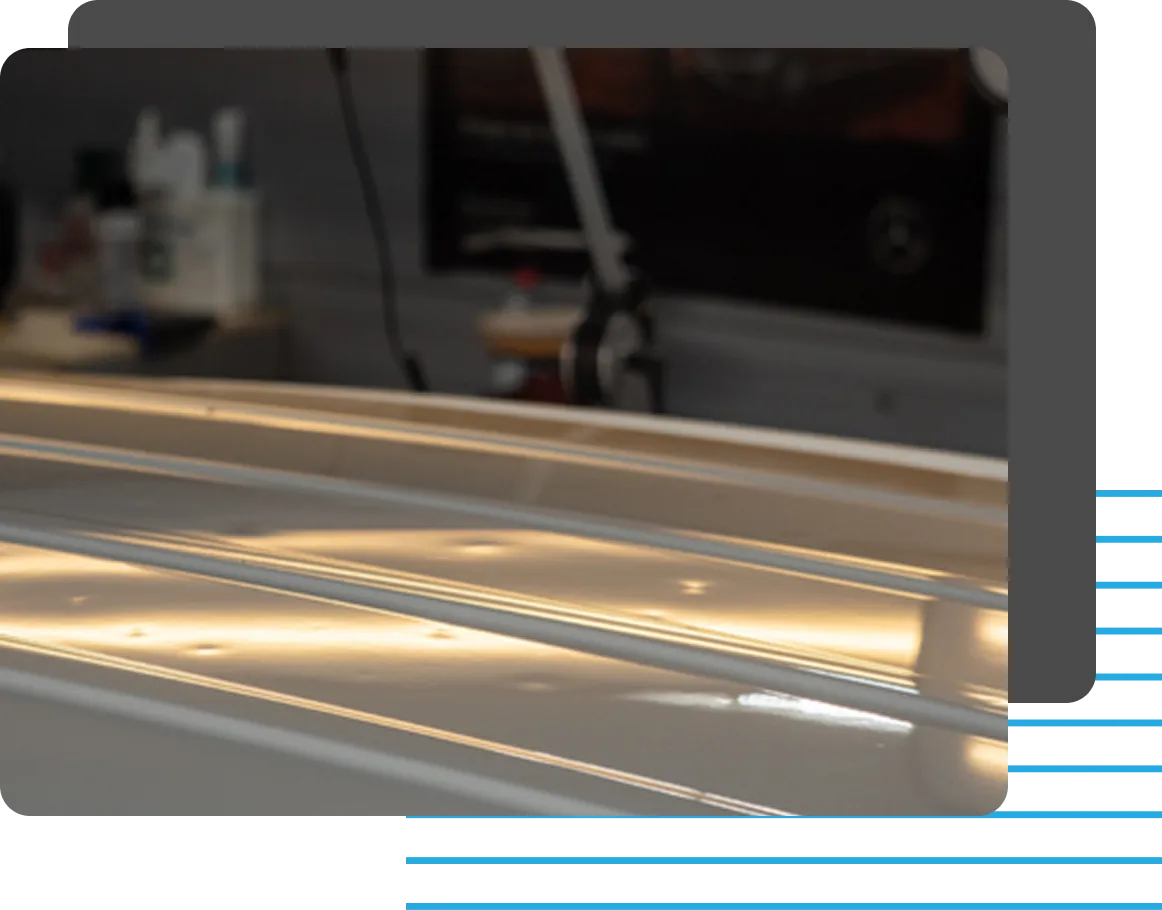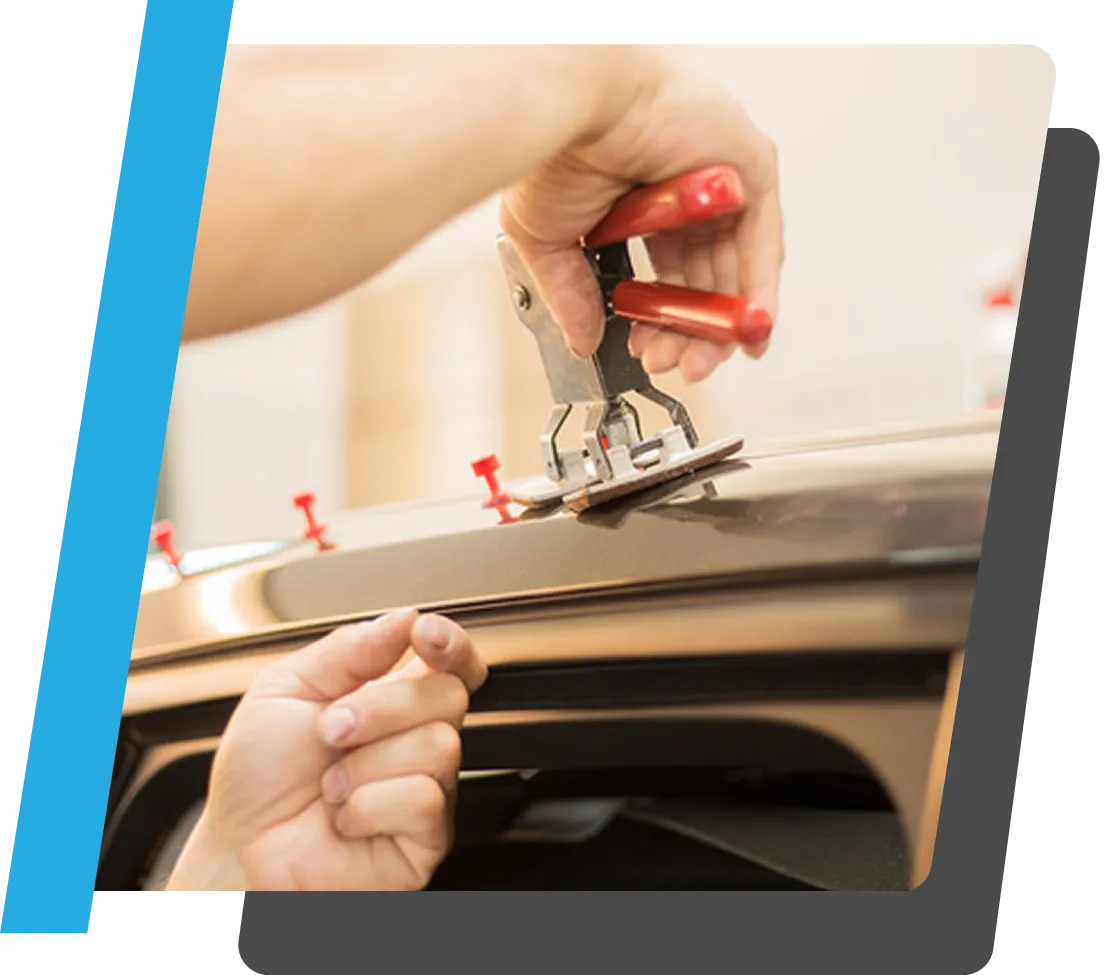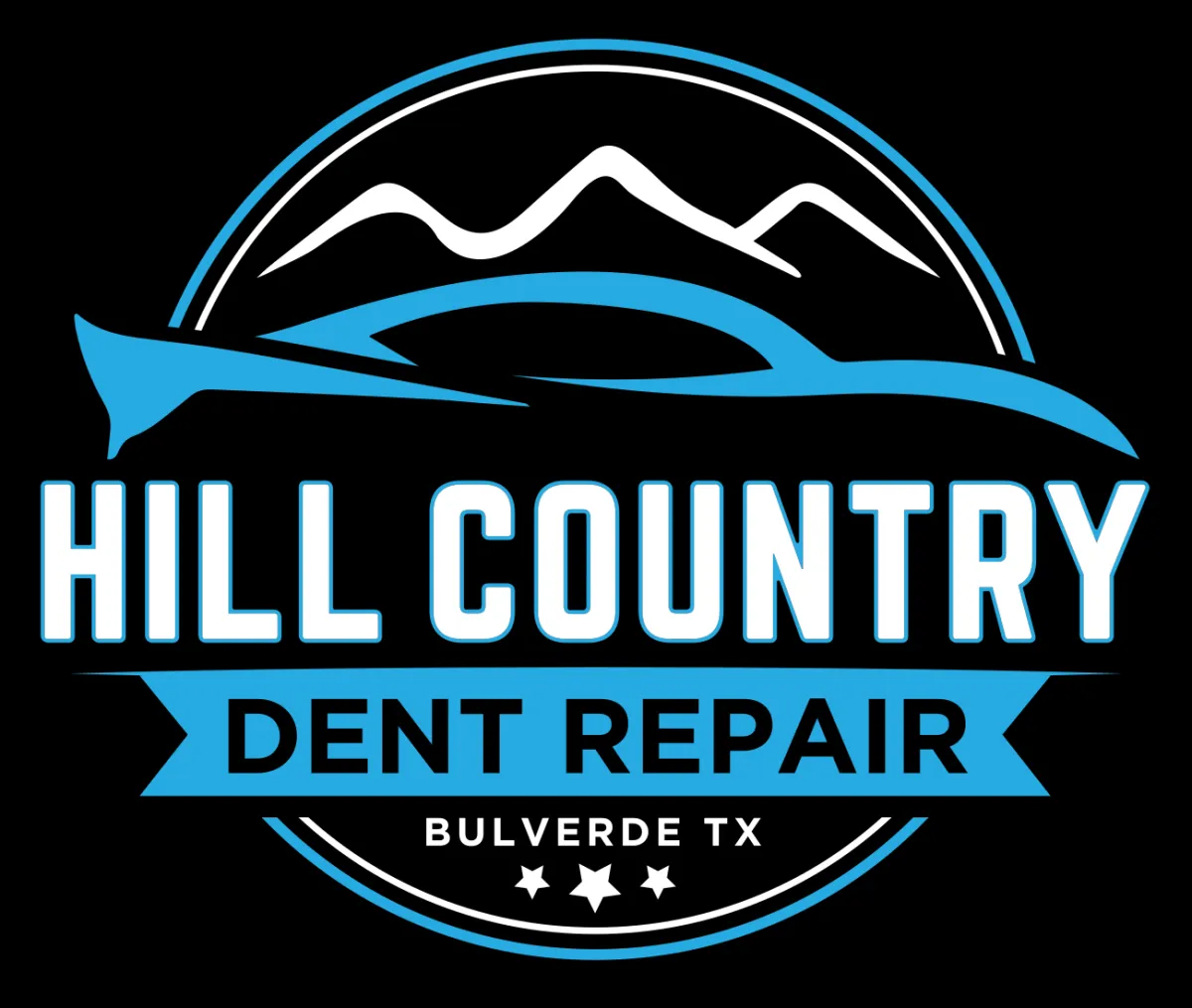What Really Happens After a Hailstorm
The Hail Repair Process: What To Expect After Hail Damage

FSDAVCFEBFEVSDDVFSD

FSDAVCFEBFEVSDDVFSD

FSDAVCFEBFEVSDDVFSD
Check the Hail Damage Before Filing a Claim

After a hailstorm, take time to examine your vehicle slowly and carefully in bright, natural lighting. Focus on common strike zones like the hood, roof, and trunk. Look closely at the body lines where dents tend to stand out. Don’t forget the edges of doors, fenders, and the roof rails.
Use your phone to capture both wide and close-up shots of any damage. Take photos from different angles to clearly show the depth and placement of dents. These images are valuable if you need to start a hail damage insurance claim or get an estimate.
Even if the damage seems minor, small dents can worsen with time. Heat, cold, and moisture cause stress on panels. Addressing the damage early helps avoid paint issues later and keeps the hail repair process quicker and more affordable.

Understanding Paintless Dent Repair Methods
Paintless dent repair for hail damage is one of the most trusted methods for restoring vehicles after a storm. This technique involves reshaping the dented metal by carefully working from behind the panel using specialized rods, reflection boards, and lighting tools. Unlike traditional repairs, there’s no need for sanding, body filler, or paint.
One of the biggest advantages of PDR is that it preserves your car’s original factory finish. That untouched paint matters—especially to buyers and dealerships. Vehicles with factory paint often hold more resale value than those with repainted panels. Because the repair leaves no visible signs, there’s no indication that damage ever occurred. For this reason, PDR is typically the go-to method for insurance companies, adjusters, and repair professionals when the damage qualifies.
PDR for hail dents is also much faster than traditional repairs. There’s no waiting for paint to dry or worrying about blending colors. It reduces the risk of future paint issues and maintains the structural integrity of your panels. For many hail repair cases, this technique offers a more accurate and cost-effective solution. It’s why so many drivers choose mobile hail damage repair when they want results without the hassle or delays.

Start Your Claim and Repair The Right Way
Start your hail damage insurance claim by collecting key details. Note the date of the storm, your location during the hail event, and take clear photos of the damage. It’s also smart to review your policy to confirm you have comprehensive coverage and to check your deductible amount.
After the claim is filed, your insurance company may send out an adjuster or direct you to a shop for a hail damage car inspection. They’ll assess the dents, write an estimate, and walk you through your repair options. Be sure to ask whether paintless dent repair (PDR) is covered—especially if you want to preserve your factory finish.
Most policies allow you to choose your own repair shop. That gives you the flexibility to work with a provider that offers mobile hail damage repair, saving time and avoiding unnecessary delays.

Filing a hail damage insurance claim doesn’t mean you’re stuck with whatever shop your provider suggests. You have the right to request paintless dent repair (PDR) if it’s a better fit for your vehicle. PDR is often quicker, less invasive, and better for maintaining the car’s original value.
Many drivers also prefer mobile hail damage repair, especially when time and convenience matter. Instead of waiting for an opening at a busy shop, you can ask if mobile service is available in your area. This option allows repairs to happen at your home or office—without disrupting your schedule.
Choosing a reputable repair provider makes a difference. Experienced shops understand how to work with insurers, handle paperwork, and get faster approvals. That means fewer delays and better results. When you pick a trusted technician, the repair process tends to move smoothly, with fewer surprises and less back-and-forth.
Choosing the Right Repair Method For You
When it’s time for dent removal after hail, most drivers aren’t sure what to expect. Once paintless dent repair (PDR) is approved, a trained technician will begin by inspecting the entire vehicle under special lighting. These lights reveal even the smallest dents that may not be visible in natural lighting. The goal is to map out every impacted area so nothing is missed.
Next, the technician checks the flexibility of the metal, the condition of the paint, and whether there’s access behind each dented panel. These factors help determine how long the repair will take and whether full restoration is possible. Most light-to-moderate hail damage can be repaired cleanly with PDR, often within just a few days. Sharp dents or stretched metal may take longer, but full panel replacement is rarely needed.
The hail damage repair timeline with PDR is far shorter than with a traditional body shop. There’s no waiting for parts, no sanding, and no paint blending. Most vehicles never even leave the driveway when mobile PDR is used. The result is a faster, cleaner process that gets you back on the road without the hassle or cost of a full collision repair visit.
What to Expect at the Hail Repair Appointment
A mobile hail repair appointment usually begins with a quick walkaround of your vehicle. The technician will look over any photos you submitted, examine the dents under specialized lighting, and confirm the quote before getting started. You won’t need to do much prep—just make sure your vehicle is parked in a well-lit, accessible area like a driveway or parking lot.
Once the inspection is complete, the technician will start the repair. Using a combination of rods, glue tabs, and lighting tools, they’ll carefully push or pull each dent back into place from behind the panel. This method avoids sanding or repainting, helping preserve the original factory finish.
It’s a fast, convenient process that avoids the delays of a traditional body shop.


Most mobile hail damage repair appointments are completed the same day, often in just a few hours. Since paintless dent repair doesn’t require sanding, body filler, or repainting, there’s no need to leave your vehicle at a shop or wait on parts. You’ll have your car back looking like new without the traditional delays.
Mobile service adds a layer of convenience that’s hard to beat. Technicians can meet you at home, work, or another safe location—saving you time and eliminating the hassle of dropping off your car. It’s a flexible option that fits into your day without major disruptions.
However, weather and lighting conditions do play a role. For the most accurate results, techs need clear visibility and dry working conditions. If it’s raining heavily or getting dark, they may recommend rescheduling to ensure a proper repair. The goal is always a clean, professional result the first time.
Avoiding Repair Delays and Costly Mistakes
Take time to review your car insurance policy before storm season starts. Look for comprehensive coverage and confirm whether paintless dent repair (PDR) is included. After a storm hits, file your claim quickly. When selecting a repair provider, don’t just go with the first body shop you find—look for a mobile hail damage repair team that has experience with PDR and a reputation for quality work.
Once the repair is complete, save all related documents, including receipts, email records, and estimates. These materials are useful if you ever sell the car or need to show proof of repair to your insurance. The entire hail repair process becomes much easier when you’re prepared, act quickly, and choose the right repair method. Mobile PDR offers a faster, cleaner solution that helps maintain your car’s condition and value.

Hill Country Dent Repair
Mobile Dent Repair & Hail Repair
Stay Up-to-date With Our Content
Subscribe to learn more about our mission!
Stay Up-to-date With Our Content
Subscribe to learn more!
Contact Info
Service Hours
Social Media
Mon - Fri: 8:00 am – 5:00 pm
Saturday: Closed
Sunday: Closed
Home
Services
Service Areas
Blog
About
Contact
Contact Info
Service Hours
Mon - Fri: 8:00 am – 5:00 pm
Saturday: Closed
Sunday: Closed
Social Media

Licensed, bonded, & insured
©2025 Hill Country Dent Repair
Powered by: Customers.Plus